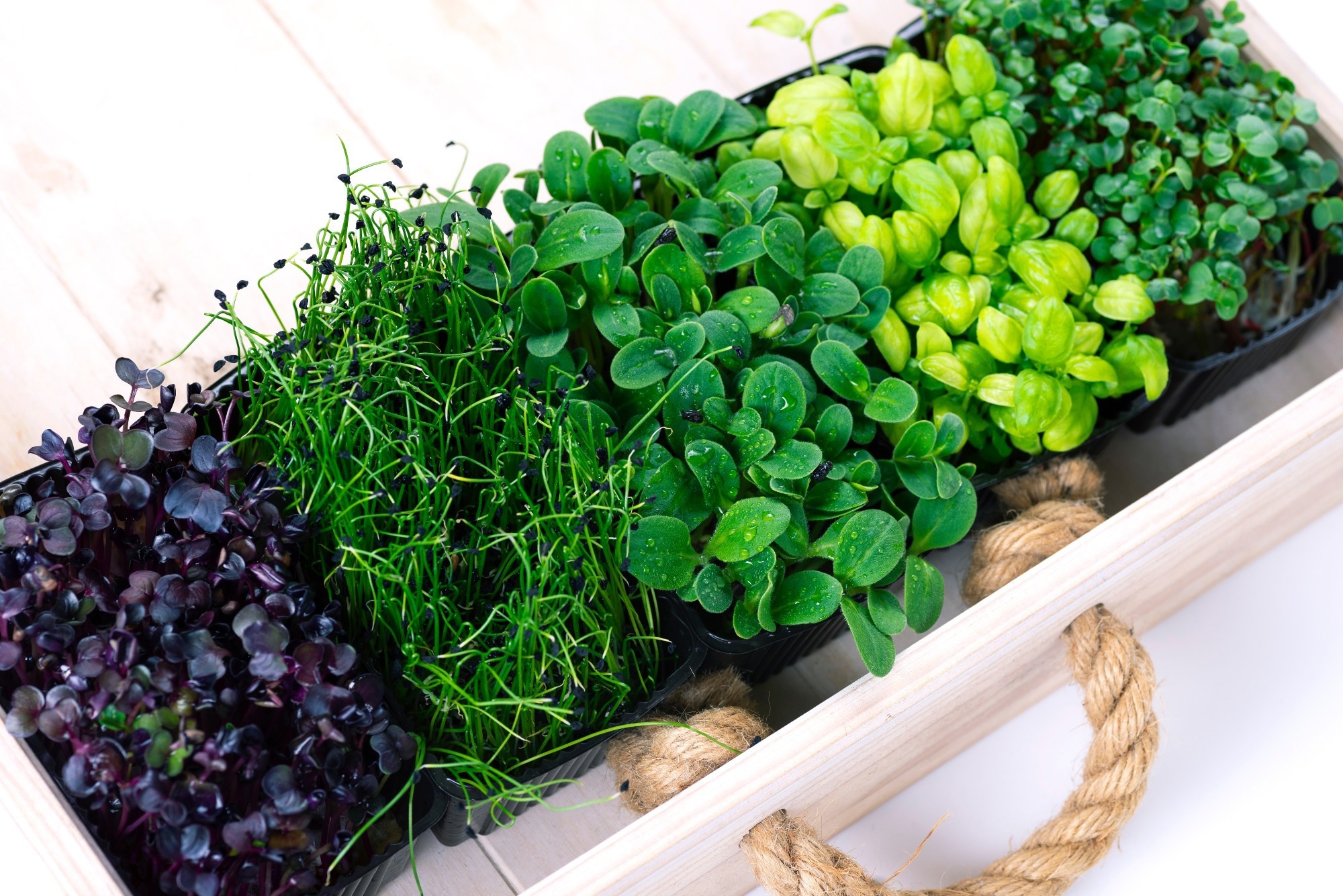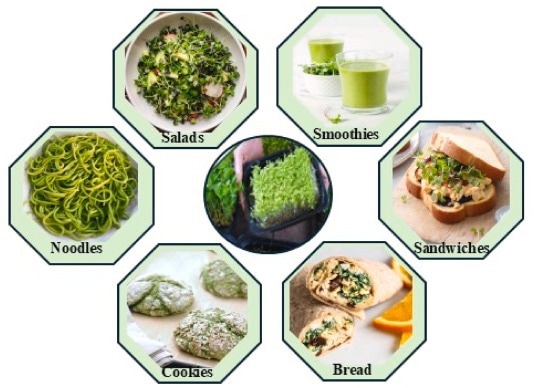Tiny cereal greens like wheat and quinoa could outshine their mature counterparts with concentrated nutrients, antioxidants, and health benefits. However, researchers warn that safety, affordability, and clinical validation are key hurdles before they can revolutionize diets worldwide.
 Study: Cereal and pseudocereal microgreens: Emerging functional foods for human health and sustainability. Image credit: Natallia Boroda/Shutterstock.com
Study: Cereal and pseudocereal microgreens: Emerging functional foods for human health and sustainability. Image credit: Natallia Boroda/Shutterstock.com
A recent review in the Journal of Cereal Science examined how growing cereals and pseudocereals such as amaranth, quinoa, sorghum, and wheat at the microgreen stage, termed microgreening, affects their properties.
They concluded that these microgreens are versatile, sustainable, and nutrient-dense and have the potential to combat global nutritional deficiencies if supported by further clinical validation and technological innovations and if they can be made safer, affordable, and more long-lasting.
Background
Cereal grains such as millet, maize, wheat, and rice form the backbone of global diets, supplying much of the daily calorie and protein intake. However, modest protein levels, poor mineral bioavailability, and anti-nutritional compounds like phytic acid often restrict their nutritional potential.
Researchers have applied various strategies to address these issues, from conventional practices like soaking, sprouting, and fermentation to more advanced approaches including biofortification, enzymatic treatments, extrusion, and genetic engineering. Each method offers specific advantages, such as improving digestibility or enhancing micronutrient content, but also faces challenges like cost, nutrient losses, or consumer acceptance.
Recently, microgreening, in which grains are cultivated at the young cotyledon stage, has become a promising solution. These microgreens are rich in vitamins, minerals, antioxidants, and phytochemicals, potentially surpassing mature grains in nutritional value.
Increasing interest in microgreens
First popularised in 1980s San Francisco kitchens, microgreens are now grown worldwide through greenhouse, vertical, and indoor farming, valued for their vivid colours, flavours, and high nutrient density. The global microgreens market is projected to exceed USD 17 billion by 2025, highlighting not only their nutritional but also their growing economic significance.
Compared to sprouts and baby greens, microgreens differ in growth method, harvesting stage, and safety profile. They offer better texture and flavour and lower microbial risk. Typically harvested 10–21 days after sowing, they contain elevated levels of vitamins, minerals, antioxidants, and bioactive compounds, earning them recognition as ‘superfoods.’
When cultivated from cereals and pseudocereals such as wheat, oats, quinoa, and amaranth, microgreens provide greater concentrations of bioavailable micronutrients and phytochemicals than mature grains, supporting dietary diversification, health promotion, and food security.

Food applications of microgreens from cereals and psudocereals.
Nutrient and chemical composition
Cereal and pseudocereal microgreens are highly nutrient-dense, offering significantly greater concentrations of vitamins, minerals, and bioactive compounds than their mature grain counterparts. They are especially rich in phosphorus, potassium, magnesium, zinc, calcium, and iron, with several times higher levels than seeds. Key vitamins include vitamin C, E, provitamin A (β-carotene), and vitamin K1, all of which contribute to antioxidant, immune-supporting, and metabolic functions.
Germination reduces starch reserves, lowering carbohydrate content, while enhancing protein, fiber, and ash (mineral) levels. For instance, wheat microgreens show over a 260% increase in protein and a tenfold increase in ash compared to mature grains. However, not all species show uniform improvements: red amaranth microgreens, for example, exhibit a marked decrease in protein content compared to their mature seeds, underscoring species-specific variability.
Microgreens also contain a wide range of phytochemicals, including phenolics, flavonoids, carotenoids, anthocyanins, and chlorophylls, which provide antioxidant, anti-inflammatory, and anticancer benefits.
Specific crops display unique strengths: wheat is high in phenolic acids and flavonoids; barley and oats are rich in anthocyanins; quinoa and amaranth supply carotenoids and tocopherols; and chia offers a diverse amino acid profile. These compounds promote health and enhance flavour, colour, and functional properties.
Cereal and pseudocereal microgreens serve as functional foods, supporting dietary diversification, chronic disease prevention, and potential nutraceutical applications, while offering a natural alternative to synthetic supplementation.
Role of environmental factors
Environmental conditions strongly shape the nutritional quality and growth performance of cereal and pseudocereal microgreens.
Light is a key driver, with photoperiod and intensity altering sugar metabolism, protein levels, mineral accumulation, and antioxidant capacity. Extended light exposure enhances chlorophyll and antioxidant activity but may reduce soluble protein.
Growth medium also plays a vital role. Soil-grown microgreens often accumulate more minerals and phenolics, while nutrient-enriched coco peat boosts yield, amino acids, and chlorophyll.
Temperature is another critical factor. While moderate ranges (around 20-28 °C) promote germination, growth, and yield, extremes reduce quality and alter metabolite expression. Storage at cooler temperatures helps preserve shelf life and nutrient integrity. Seasonal variation further affects pigment and phenolic levels, with differences observed between winter and summer harvests.
Thus, careful management of light, medium, temperature, and season is essential to optimizing yield, flavor, and bioactive properties and ensuring consistent year-round production.
Conclusions
The review highlighted cereal and pseudocereal microgreens as nutrient-dense functional foods rich in vitamins, minerals, antioxidants, and bioactive compounds with antioxidant, anti-inflammatory, and metabolic benefits.
Their tender texture, flavor, and suitability for hydroponics and vertical farming enhance consumer appeal and sustainability. They show potential in preventing chronic diseases, addressing micronutrient deficiencies, and even serving as food for space missions. They are also increasingly incorporated not just into fresh salads, but into juices, snacks, noodles, and baked products, broadening their functional and commercial use.
However, challenges include short shelf life, perishability, risks of microbial contamination, high production costs, and nutritional variability influenced by species and growth conditions, limiting their applicability.
The authors emphasize that while preliminary studies are promising, rigorous animal studies and human clinical trials are still required to validate many of the claimed health benefits. Consumer awareness and regulatory gaps also limit wider adoption.
Download your PDF copy now!